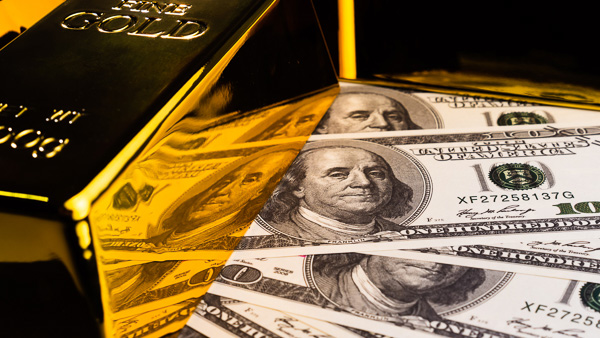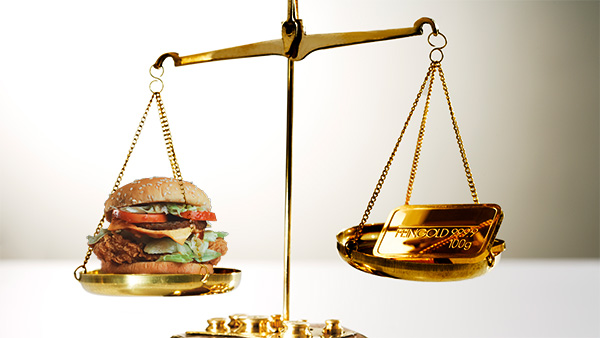While fiat fluctuates; gold remains a strong constant
Gold can’t be Printed on Demand

August 15, 1971, Sunday. This day marks when the United States of America – then the largest creditor in the world – stopped using gold to back the dollar. Then-president Richard Nixon announced that the U.S. Dollar would no longer be tied to the value of gold, citing “national security” as grounds.
Freed from having to be backed by something of actual value, the U.S. government began printing currency bills to allow the country to continue issuing more debt. In today’s terms, that’s known as a “capital injection”, and it’s one of the commonly used ways to manage the economy of a country.
But the practice belies the fundamental weakness of fiat currencies. Their monetary values are too often changed irrespective of demand; a consequence of there not being a natural limit on supply. As author Ray Dalio details in his book Principles for dealing with the Changing World Order, when times are bad, governments tend to print more currency. And that can have severe consequences.
That’s why gold is precious. You can’t just print more of it!
Gold Gains Value with Time
Gold has value without being tied to any currency or government promise.
Unlike fiat currencies, holding gold doesn’t pay interest either. That’s because the dollar value of the metals themselves increase manyfold over the years, a natural consequence of being limited in nature.
Current best estimates suggest that only about 208,874 tons of gold have been mined throughout mankind’s history. If you put every single ounce of this next to each other, the resulting cube of gold would only measure about 22 meters long on each side. Not much at all, if you divided it up among the estimated 8 billion people in the world.
As Ray Dalio notes, government devaluation of currencies may cause stocks and commodity prices to rise, but the inflation that results also erodes the currencies’ value over time. Interest rates for savings accounts struggle to keep up. Conversely, the scarcity of gold and silver means that there will only be less supply over time. As we know from economics, lower supply met with higher demand means higher prices.
With fiat currencies, there are often fluctuations in value; especially if accompanied by a change in the world order. But with gold, the value will only rise with time.
Gold is a True Measure of Value
Why the demand for gold?
Gold is one of a group of only eight elements known as “noble metals”. “Noble”, because these metals barely react with other elements, including oxygen. Gold is the “noblest” of all metals; it doesn’t rust. Which is why you’ll find gold statues and jewelry from thousands of years past still in pristine condition at museums around the world.
Uniquely, pure gold doesn’t tarnish either. It also can be melted down to smaller denominations and transported, a necessary condition for anything to act as a form of currency. And of course, it has a luster and color unlike any other.
Maybe that’s why Ray Dalio favors gold. Unlike paper currencies, the worth of gold doesn’t have to be measured relative to some other marker of value.
It is a measure of value.

Unlike Paper, Physical Gold gives You more Value over Time
The Big Mac index is a tool introduced by The Economist to measure the Purchasing Power Parity across countries informally. While not a scientific measure per se, it does well to illustrate how the purchasing powers of currencies change relative to each other as well as over time.
There’s a Gold Mac index compiled that measures the value of gold in terms of Big Macs over time. This is based on the Euro but gives a relative base to illustrate the point:
- In April 2002, a Big Mac cost €2.67, whereas 1g of gold cost €10.98, so you could get 4.11 Big Macs for 1g of gold.
- 10 years down the road, and it would cost you €3.49 for a Big Mac. 1g of gold would now be worth €41.13, and you’d be able to get 11.79 Big Macs.
- As of January this year, that same Big Mac now costs €4.86. 1g of gold was worth €56.55 at that point, good for 11.64 Big Macs.
As we see, to buy the same item over time with the Euro would require us to almost double our incomes (1.8 times to be precise) over twenty years. Conversely, the purchasing power of gold almost tripled over the first ten years and almost held full value over the full twenty. The same applies across all the currencies of the world, a natural consequence of inflation.
Where fiat currencies require you to hold more to retain value, gold gives you more value over time. As Ray Dalio puts it, “timeless and universal”.
Hold Physical Gold, not Paper
Convinced that it is better to hold gold?
Before you rush to invest, it’s important to make a distinction between owning gold and being a creditor of gold.
Many gold storage programs claim to offer ownership to clients but do not provide proof of ownership. Instead, the accounts only show that you have purchased a certain number of generic gold grams (or troy ounces) and the purchased gold cannot be uniquely identified. That makes you a creditor to the company offering the gold program, not an owner of gold.
As such, ownership is akin to holding cash in a bank. Holdings are often over-leveraged for profit, and only stay safe as far as there is no major drawdown. If there is a financial crisis or a gold shortage, these programs are prone to fail, so you’re unlikely to truly reap the value of holding gold.
To be truly secure, own gold in physical form and store it outside the financial system in a storage system that makes you the owner. With our S.T.A.R. Storage program for example, you are the legal title owner of uniquely identifiable bullion fully insured and stored exclusively in one of the safest storage options in the world, The Safe House.